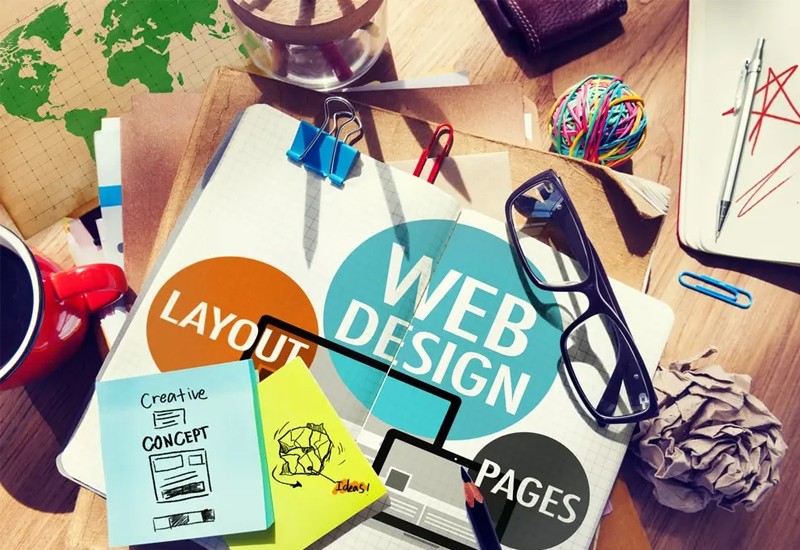Effective web design can lead to two things: successful transactions or lost potential customers. Of course, as a business owner and marketer, your goal is the latter.
With the best website design techniques, you can encourage your site’s visitors to stay on your page and learn more about your brand. On the other hand, if you don’t give attention to your site’s design, it will be easier for your visitors to leave your page and turn to your competitors.
Having a great web design is important as it increases your brand awareness and your chance of selling a product or service. Moreover, it influences how consumers perceive your brand. So make sure to follow these effective website design tips to make the best impression on your visitors and start getting more conversions in no time.
Top 10 Elements of a Good Website Design
1. Great User Experience (UX)
To guarantee the most effective web design, make sure that you optimize your site for your users and not for search engines. All the graphics, images and the whole appearance is nothing if it can’t provide a great user experience. This is the biggest element you should consider as it can mean the difference between the success and failure of your website.
A website with a great appearance but lacks in user experience is somewhat like a Ferrari with no engine. No matter how cool and impressive it is on the outside, it serves no purpose and it can’t help you get to where you want to go. So when designing your website, make sure that you’re keeping users in mind and provide what they need.
To help you, ensure that your pages are in order and create clickable buttons. Design your website so that users can find what they are looking for in not more than three clicks. Also, keep in mind that users have a limited attention span so put all the information they need in front of them.
When it comes to visual presentations, keep your website organized and emphasize the most important elements. You can do this by choosing the right sizes, colors, and arranging them properly. For example, fill up forms should have boxes above the fold and a “Submit” button that is big and easy to see.
2. Fast Load Time
According to experts, users tend to leave a site if it took longer than eight seconds to load. And in 2020, this was cut to half. So if your website takes more than three seconds to load, you’re bound to lose potential customers.
To guarantee a fast loading time, reduce the size and scale of some of your images. Also, make landing page redirects cacheable. If these don’t work, think about upgrading your servers.
3. Mobile Access
More than half of internet users now use mobile devices for their searches. According to Statista, the number of smartphone users all over the world is expected to reach 2.87 billion in 2020. So make sure that your website is designed not only for desktop but also for mobile phones.
As a business owner or marketer, you need a mobile-friendly website to reach as many potential customers as you can. To do this, create mobile versions of your site or use a responsive layout that can automatically adjust to different screen sizes. The most effective web design is flexible and should be easily visible on different devices, browsers, and operating systems.
4. Strong and Limited Color Schemes
The number of colors you use is a very important aspect of your web design as too many colors can become very distracting. With a strong and limited color palette, you can create cohesiveness in your business.
Choose only three or four colors when designing your website. This makes it easier for users to focus and you’ll appear more current and modern. Also, consider hues in the same color family and avoid bright colors as your background. Remember that colors tend to create certain emotions as well. For example, red has been proven to make people hungry. This is why most fast-food restaurants use it for their logos. On the other hand, cool tones such as purple, blue, and green are more calming.
5. Generic Website Layout
While being unique is a good thing, this is not always the case in web design. People are used to seeing a certain layout. And you should take advantage of this. Why change something that’s not broken, right?
So one of the best website design techniques is to follow the generic layout where you should arrange them as follows:
- Navigational menus at the top of the page
- Clickable logo at the top, redirecting back to the homepage
- A search bar at the top right-hand corner
Other than that, make links appear in a different color when hovered by a user and avoid fancy jargon that people won’t be able to understand immediately. Try to use more common buzzwords like “contact us”, “submit”, and “add to cart”. Sticking to what people are already used to makes your site easier to navigate and it leaves less room for guessing.
6. Aesthetics
When users visit your website, the first they notice is its visual appearance. They won’t look at your great content or one-of-a-kind products. Thus, it’s important to have an amazing aesthetic. To do this, you should focus on the three most important elements which are typography, colors, and balance.
Since we’ve already discussed colors, let’s move on to typography. Texts can affect the feel you want for your website. If you’re aiming for sophistication, you can use ornate and cursive fonts. If you want to be more modern, Sans Serif fonts work well. The same font with a size of 12-16 is also best for body texts as it’s easier to read. Also, you can play with fonts with your headlines but be sure to be consistent.
You can experiment with typography but be sure to follow the general rule: don’t use more than three different fonts across your website.
In terms of balance, always apply the “Rule of Thirds”. This way, you can place important elements on a spot where they’ll be easier to see. Plus, this will make your website more visually appealing.
7. E Format
The E format is how people read pages. Normally, people will scan websites starting at the upper left corner then move across the page to the right. After, their eyes go down on the left side and back across the bottom right. Following this pattern, the most important information should be placed on the top left corner. For the least important, put it on the bottom right since this is the most ignored area.
8. Consistency
A website with consistent design elements is easier to trust and use. It helps improve user experience as well. Some ways you can stay consistent are:
- Maintaining the same menu bar at the top across every page of your website
- Having the same color scheme and fonts on each page
- Keeping a consistent image style
- Applying one consistent motif across your website
9. High-Quality Videos
They say that videos are the future. There’s no wonder why as they are easier to learn from and they are more entertaining. And with the help of high-quality videos on your website, you can highlight your products and services and add movement to your site. So keep up with the trend and start adding videos.
10. Constant Optimization
The key to your website design’s success is constant optimization. To make sure it is user-friendly and effective in conversion, always test your website. Even when you think you’ve done everything right, it is easy to miss small mistakes. Thus, have other people use your website and ask them for feedback and suggestions.
When testing your website, make sure to open it from different devices, operating systems, and browsers. Also, remember that optimization is not a one-time activity. Everything on the internet is constantly changing. So you should constantly update your site to keep up with new information.
Conclusion
If you want to give users the best impression, having an effective web design can help you. It will not only present your products and services in the best way possible but it can also guide your visitors towards the action you want them to take.





